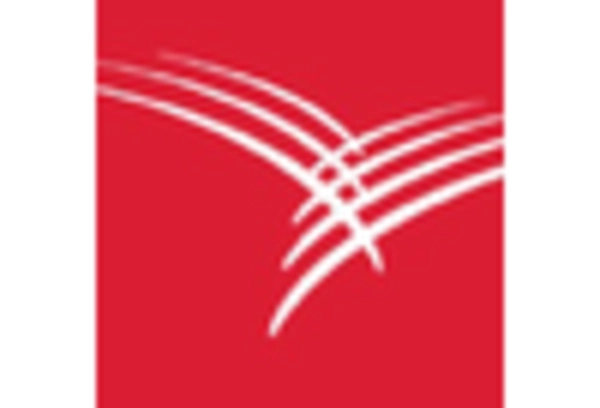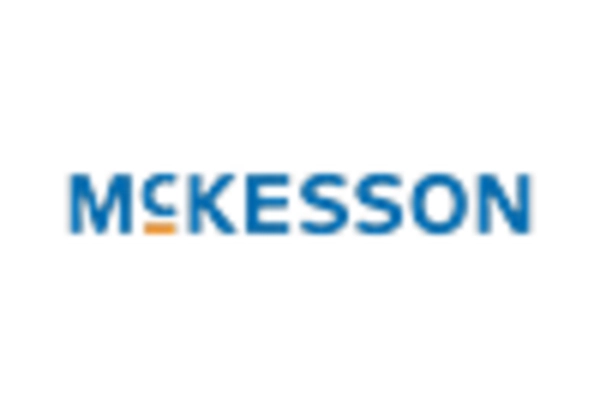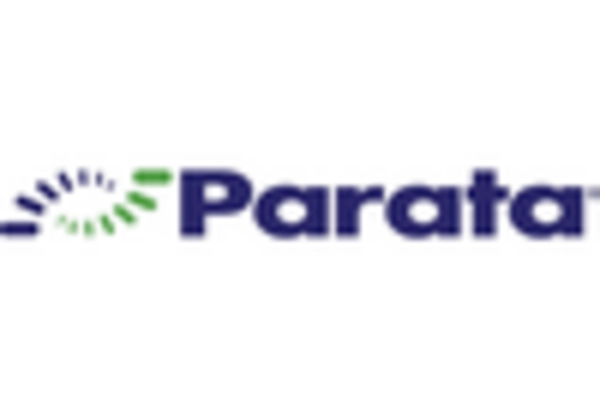Rising Demand for Efficiency
The pharmacy automation market in Italy is experiencing a notable surge in demand for efficiency. As healthcare providers seek to optimize operations, automation technologies are increasingly being adopted to streamline workflows. This trend is driven by the need to reduce human error and enhance productivity. According to recent data, pharmacies that implement automation solutions report a reduction in medication dispensing errors by up to 30%. This efficiency not only improves patient safety but also allows pharmacists to focus more on patient care rather than administrative tasks. Consequently, the pharmacy automation market is projected to grow at a compound annual growth rate (CAGR) of approximately 10% over the next five years, reflecting the increasing reliance on automated systems in pharmacy operations.
Regulatory Support for Automation
In Italy, regulatory bodies are increasingly supporting the adoption of automation technologies within the pharmacy sector. The pharmacy automation market benefits from favorable regulations that encourage the implementation of advanced systems to enhance operational efficiency and safety. Recent legislative changes have streamlined the approval process for automated dispensing systems, making it easier for pharmacies to integrate these technologies. This regulatory support is crucial as it not only fosters innovation but also ensures that pharmacies comply with safety standards. As a result, the pharmacy automation market is likely to see a significant uptick in investments, with projections indicating a potential market value increase of €200 million by 2027.
Aging Population and Chronic Diseases
Italy's aging population is a critical driver for the pharmacy automation market. With a growing number of elderly individuals requiring medication management for chronic diseases, pharmacies are increasingly turning to automation to meet this demand. The automation of medication dispensing and management systems allows for more accurate and timely delivery of prescriptions, which is essential for this demographic. Data suggests that approximately 25% of the Italian population will be over 65 years old by 2030, leading to a heightened need for efficient pharmacy services. This demographic shift is likely to propel the pharmacy automation market forward, as pharmacies seek to enhance their capabilities to serve an aging clientele effectively.
Cost Reduction and Resource Optimization
Cost reduction is a primary concern for pharmacies in Italy, and automation presents a viable solution. The pharmacy automation market is witnessing a shift as pharmacies seek to optimize resources and minimize operational costs. Automated systems can significantly reduce labor costs and improve inventory management, leading to enhanced profitability. Reports indicate that pharmacies utilizing automation can save up to 20% on operational expenses. This financial incentive is compelling, particularly for small to medium-sized pharmacies that often operate on tight margins. As a result, the pharmacy automation market is likely to expand as more pharmacies recognize the potential for cost savings and improved operational efficiency.
Technological Advancements in Automation
Technological advancements are playing a pivotal role in shaping the pharmacy automation market in Italy. Innovations such as artificial intelligence (AI) and machine learning are being integrated into pharmacy systems, enhancing their capabilities and efficiency. These technologies enable pharmacies to predict medication needs, manage inventory more effectively, and reduce waste. Furthermore, the introduction of smart dispensing systems is revolutionizing how medications are managed and delivered. As these technologies continue to evolve, they are expected to drive significant growth in the pharmacy automation market, with estimates suggesting an increase in market size by €150 million by 2026. This trend indicates a strong shift towards more intelligent and responsive pharmacy operations.

















Leave a Comment